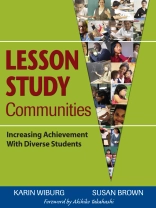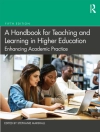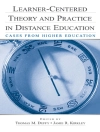‘If you are seeking a more effective way to improve teaching and learning for your students or innovative ways to help teachers become actively involved in their professional career, you will enjoy opening the door to lesson study.’
—From the Foreword by Akihiko Takahashi
Employ one of the most promising strategies for linking professional development and student achievement—lesson study!
Educators have been examining the Japanese lesson study model for years, but the dissimilar environment in U.S. schools has prevented a widescale adoption of this effective form of professional learning.
Lesson Study Communities demonstrates how to translate each step of the Japanese lesson study process to the educational environment of U.S. schools. Offering specific strategies that have been tested and successfully used with ethnically diverse students, this book incorporates a culturally responsive approach to curriculum, instruction, and assessment. Working in impoverished schools with ELL and low SES students, Wiburg and Brown′s program made significant progress toward closing the achievement gap in poorly served communities.
Applicable to math, science, reading, language arts, and social studies programs, this implementation guide:
- Explains how to connect lesson study to school or district instructional goals
- Provides case examples and step-by-step guidance
- Reveals how lesson study can be integrated into daily work
- Offers extended learning activities and exercises
Addressing the challenge of changing student demographics, this book includes guidance on assessing readiness for lesson study, planning the research lesson, gathering data, modifying the lesson, and sharing findings.
Staff developers, teachers, and administrators committed to increasing student achievement will find this to be a significant stride toward ensuring academic success.
Table des matières
Foreword by Akihiko Takahashi
Preface
Acknowledgments
About the Authors
1. Translating Lesson Study From Japan to the United States
2. Building Successful Lesson Study Communities
3. Assessing Your Readiness for Lesson Study
4. Connecting Instructional Goals to Lesson Study
5. Designing the Research Lesson
6. Reflecting on and Sharing Your Research Lesson
7. Integrating Lesson Study With Existing School Initiatives
Resource A: Professional Development Materials
Resource B: A Problem-Centered Unit
References
Index
A propos de l’auteur
Susan W. Brown, PH.D.: Currently is Principal Investigator/Project Director for several grants, including the Southern New Mexico Science, Engineering, Mathematics, and Aerospace Academy, in the College of Education at New Mexico State University in Las Cruces, NM. Her research focus is science education and the under-representation of minority students and females in the fields of science, math, and engineering, and the grants reflect this focus. Besides the grant work, she teaches early childhood and elementary science methods at New Mexico State University, as well as work with NASA as an Aerospace Education Specialist. Throughout her teaching and research career she has earned numerous awards such as the 2004 New Mexico State University Outstanding Research, Presidential Award for Excellence in Science Teaching, the Disney/Mc Donald Award, Who’s Who Among America’s Teachers, and special recognition from the New Mexico legislature. She is nationally board certified and has facilitated many educator’s workshops, presented and published nationally and internationally.












